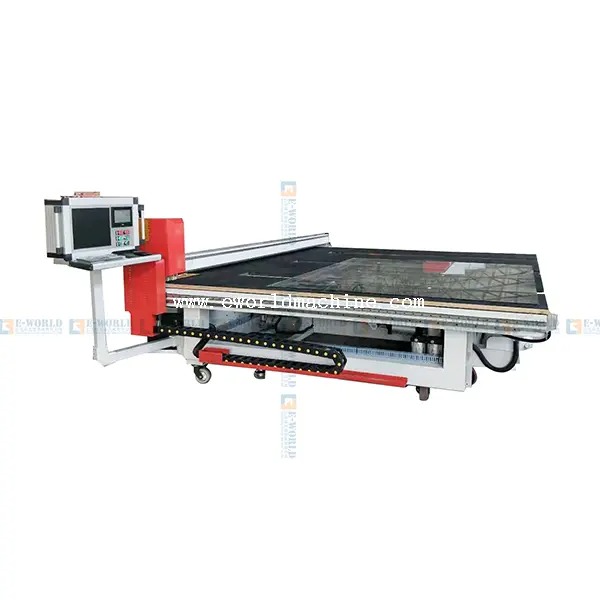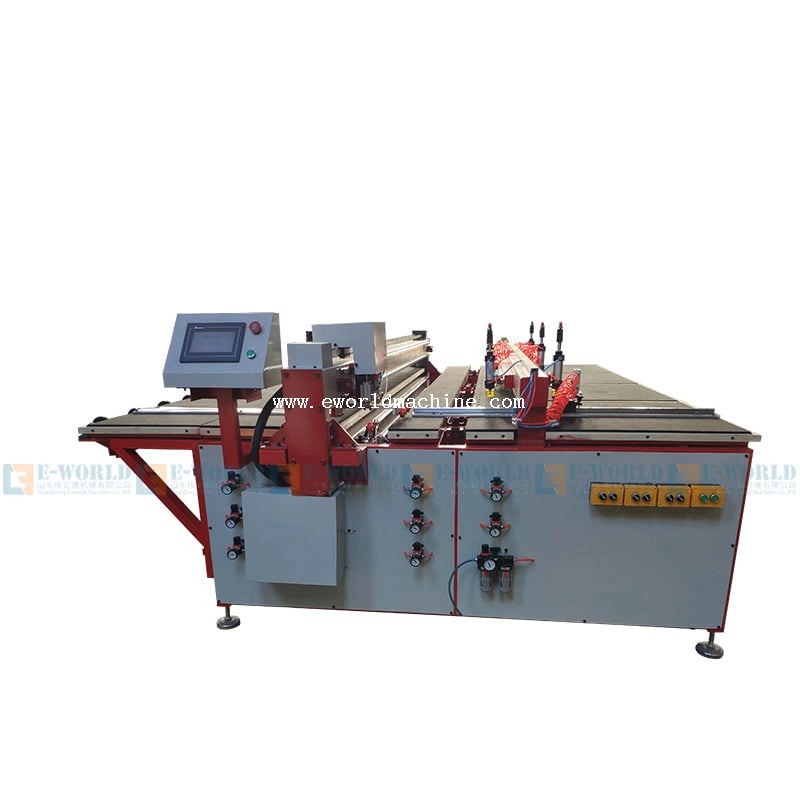WhatsApp: +8615665767071 Email: info@eworldmachine.com
Views: 167 Author: Site Editor Publish Time: 2025-09-24 Origin: Site
Cutting glass is one of those tasks that looks simple from the outside but quickly reveals its challenges once you try it. A small miscalculation, the wrong tool, or even a shaky hand can cause cracks or splits that ruin the piece. For industries like construction, automotive, or interior design—where precision is non-negotiable—preventing glass from splitting is more than just craftsmanship, it’s about productivity, cost savings, and safety. This is why professional glass workshops increasingly rely on advanced solutions such as the automatic glass cutting machine.
This article explores proven methods to prevent glass from splitting when cutting. We’ll look at practical preparation steps, manual vs. automated techniques, and the growing role of automation in making glass cutting not only more accurate but also safer.
Before tackling prevention, it’s important to understand why glass splits in the first place. Glass is inherently brittle, meaning it doesn’t flex under stress the way metals or plastics do. When you score and attempt to break glass, you are essentially guiding a controlled fracture. If that fracture deviates from the intended line, a split occurs.
Uneven scoring pressure
Dull or low-quality cutting wheels
Using the wrong cutting lubricant
Inconsistent support under the glass
Temperature imbalances (hot or cold spots)
By addressing these root causes, you dramatically improve your chances of achieving a clean, professional cut.

A large portion of glass-cutting success comes down to preparation. Think of it as setting the stage for the cut—skip these steps, and you invite unnecessary splitting.
Key preparation techniques include:
| Preparation Step | Why It Matters |
|---|---|
| Cleaning the glass | Dust or debris can disrupt scoring and cause uneven fractures |
| Choosing the right cutter | Quality cutting wheels ensure consistent pressure |
| Marking the cut line | A clear guideline prevents accidental deviations |
| Temperature control | Glass expands and contracts with temperature changes; balanced conditions reduce stress |
Even when using advanced equipment like an automatic glass cutting machine, preparation is still essential. Machines excel at precision, but a dirty or uneven surface can still compromise the outcome.
For craftsmen working with hand tools, technique is everything. A steady hand, consistent pressure, and correct break-off methods separate clean cuts from costly mistakes.
Use consistent scoring pressure – The wheel should glide smoothly, leaving a single, continuous score line.
Avoid double scoring – Going over the same line weakens the glass and increases the risk of splitting.
Use proper lubrication – Specialized cutting oils reduce friction, heat, and uneven breaks.
Snap the glass correctly – Apply gentle, even pressure along the score line. Rushing this step almost guarantees unwanted splits.
While manual cutting has its place, it becomes less reliable for high-volume projects or when absolute precision is required. This is where automation transforms results.
The most reliable way to prevent glass splitting today is through automation. An automatic glass cutting machine eliminates much of the human error that plagues manual cutting.
Consistent scoring pressure – Machines apply uniform force, reducing weak spots.
Computer-guided precision – Software ensures exact cuts along complex patterns or straight lines.
Integrated lubrication – Automated oiling systems minimize friction.
Stable support platforms – Machines hold glass firmly, preventing micro-movements during cutting.
| Feature | Manual Cutting | Automatic Glass Cutting Machine |
|---|---|---|
| Scoring pressure | Varies by operator skill | Always consistent |
| Accuracy | Dependent on steady hand | Controlled by software |
| Speed | Slower, labor-intensive | Fast and scalable |
| Risk of splitting | High for beginners | Significantly reduced |
For businesses, this shift doesn’t just mean fewer broken sheets; it translates into saved materials, reduced labor costs, and greater safety.
Not all machines are built the same. Depending on the scale of your project, choosing the right model is key to preventing glass splitting effectively.
| Machine Type | Best Use Case | Splitting Prevention Benefit |
|---|---|---|
| CNC-based cutters | High-precision architectural or automotive glass | Superior accuracy with complex shapes |
| Table-top cutters | Small workshops or custom jobs | Reliable, space-efficient option |
| Fully automated lines | Industrial-scale production | Maximum consistency, minimal waste |
When selecting a machine, consider not only upfront costs but also long-term savings from reduced breakage and higher throughput.

Preventing splits isn’t only about quality—it’s also about safety. Splitting glass can result in sharp shards that put workers at risk.
Essential safety tips include:
Wearing cut-resistant gloves and protective eyewear
Ensuring proper ventilation when using lubricants
Using stable work surfaces with anti-slip properties
Training staff thoroughly before introducing an automatic glass cutting machine
A safer environment leads to more confident handling, which in turn minimizes mistakes.
For businesses, preventing glass splits is not only about aesthetics but also about economics. Broken sheets translate into material waste, delays, and increased costs.
By integrating an automatic glass cutting machine, companies benefit from:
Lower rejection rates – fewer pieces ruined by splitting
Faster turnaround – machines cut multiple sheets efficiently
Enhanced customer satisfaction – clean edges and reliable results
Future-proofing operations – automation positions businesses competitively in evolving markets
Preventing glass from splitting when cutting is both an art and a science. While manual techniques can work with the right preparation and skill, they leave too much room for error—especially at scale. The real game-changer is automation. By using an automatic glass cutting machine, professionals achieve consistent, clean cuts with minimal risk of splitting. Whether you’re a small workshop or an industrial-scale manufacturer, the combination of preparation, technique, and automation is the key to flawless glass cutting.
1: What is the most common reason glass splits during cutting?
Uneven scoring pressure is the biggest culprit. Applying too much or too little pressure causes fractures to travel unpredictably.
2: Can beginners prevent splitting without expensive machines?
Yes. With proper preparation—cleaning, marking lines, using quality tools—and practicing consistent scoring, beginners can improve success rates.
3: Do automatic glass cutting machines work on all types of glass?
Most machines are versatile and handle float glass, laminated glass, and coated varieties. However, specialty glasses may require specific machine adjustments.
4: Is lubrication always necessary when cutting glass?
For manual cutting, yes—it reduces friction and heat. Automatic machines often include built-in lubrication systems to maintain consistency.
5: Are automatic glass cutting machines cost-effective for small workshops?
Yes, especially table-top models. While initial investment is higher, savings from reduced waste and improved efficiency often offset the cost quickly.